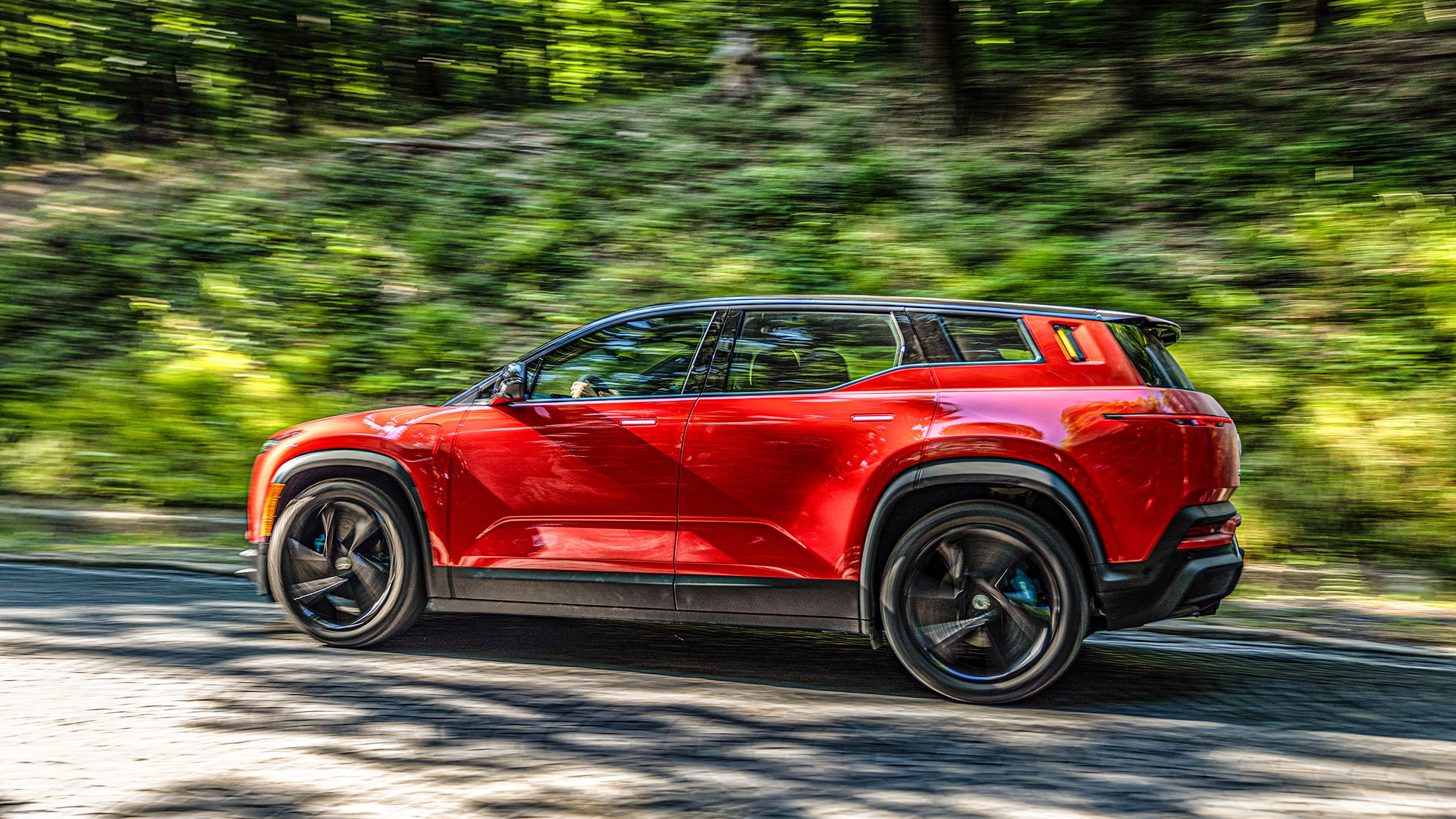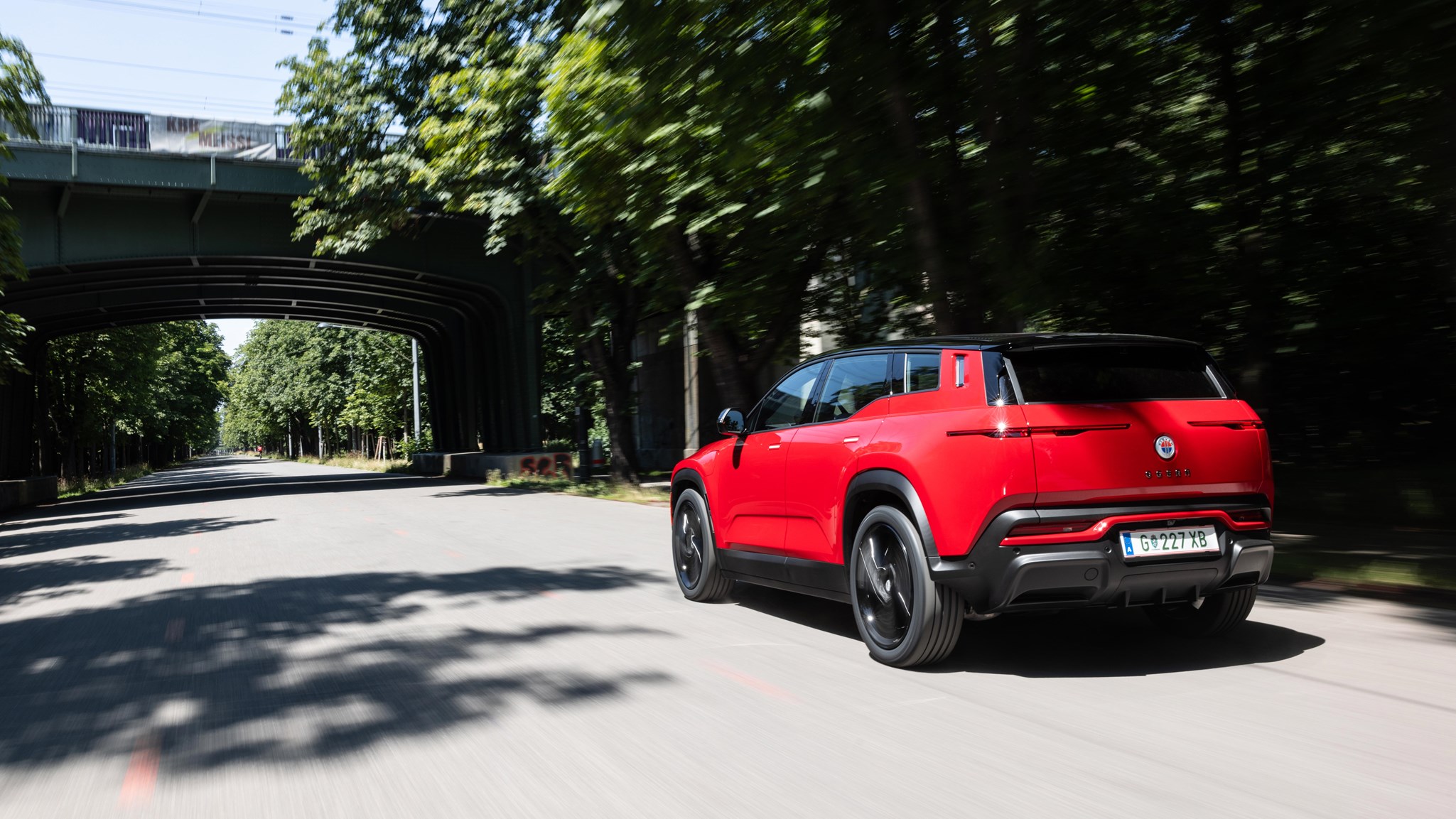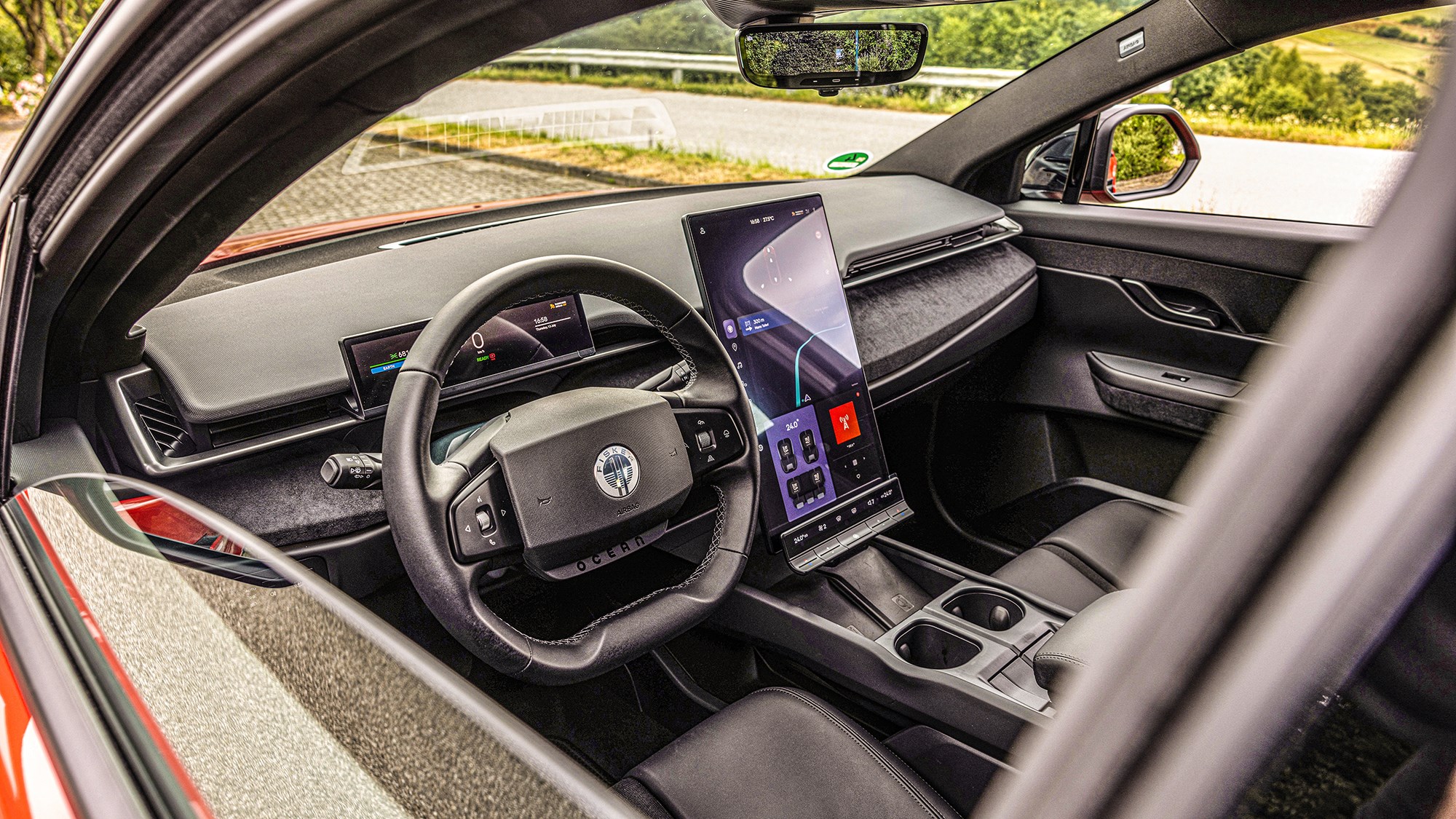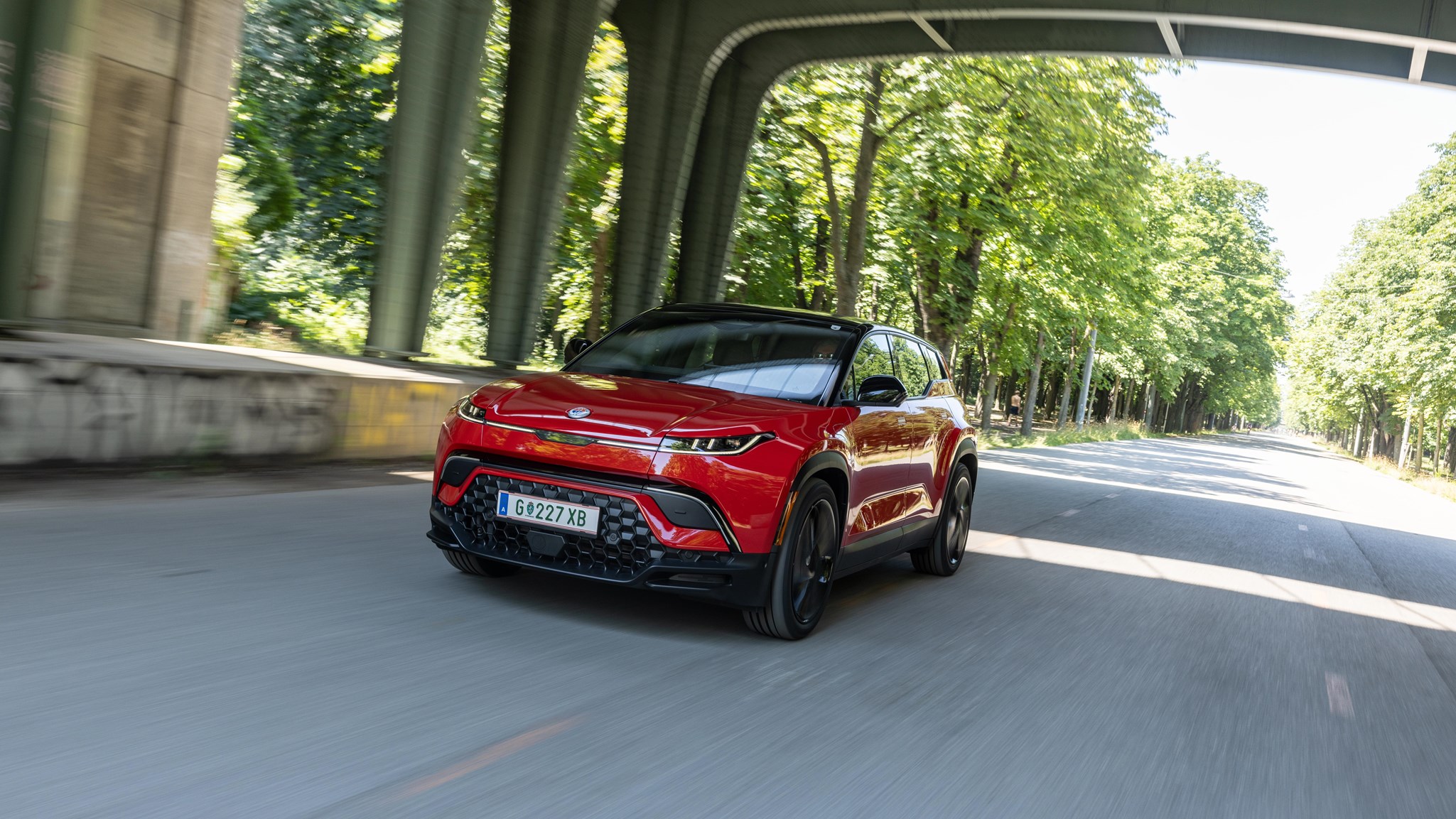► Fisker Ocean driven in Europe
► New all-electric SUV, coming to UK
► Massive range, ropey handling
The electric market is growing thanks new models as well as new brands, and the all-new Fisker Ocean ticks both boxes. The latest vision from Henrik Fisker, it’s a moderately-sized electric SUV produced by Magna, and aims to battle with the old guard of motoring in both looks and specs.
Vienna, a city known for its historical significance, serves as the backdrop for this vehicle’s introduction. It’s an unconventional location for an electric vehicle debut, but thanks to a blend of urban and open-road driving conditions it’s actually the ideal location to press the flesh of Fisker’s latest SUV.
So is it any good? Keep reading our Fisker Ocean review to find out.

What are the specs like?
Our test car is a red top-of-the-line Fisker Ocean Extreme which retails at £60,880. That buys you a big 106.5kWh (net) battery, two motors good for a combined 556bhp and 544lb ft of instant torque, plus all-wheel drive and the ability to accelerate from zero to 62mph in 4.0 seconds. Sub-5.0sec launches have become ubiquitous in the new era of EVs, but back in the real-world that’s very quick for a car this size.
This Ocean Extreme will be followed in spring 2024 by an entry-level version, the Sport. Priced from £35,970, it’ll stick with a 75kWh battery, front-wheel-drive and 271bhp.
It will be more than three seconds slower to 62mph, and top speed will be limited to 100mph. With a WLTP efficiency figure of 3.65 miles per kWh, its range will be 273 miles, according to Fisker.

Fisker makes big claims about the Ocean’s efficiency, but they’re backed up by WLTP figures: two hours into day one, with the state of charge an indicated 85%, the estimated range reads 380 miles.
On the S5 dual carriageway between Vienna and Krems, the Ocean briefly hits its top speed, and even that barely dents the anticipated distance to empty. It’s impressive stuff.
After 230 miles of inspired driving through the high promontories close to the border with Czechia, the power pack still relays the theoretical willingness to cover 200 more miles before the next high-voltage fix.
If this first outing is anything to go by, the Fisker can indeed challenge or even eclipse its German and Korean rivals for outright efficiency.

What’s it like to drive?
On the motorway, we get a chance to properly sample the Ocean. The vehicle offers multiple driving modes – the cheesily titled Earth, Fun, and Hyper – each tailored for different driving conditions.
Earth is an eco mode, while Fun mode tries to be the best of all worlds, mixing and matching dynamic ambitions with efficiency. Hyper is about prompt feedback, instant action and no-holds-barred torque feed.
It speeds up the throttle response, further reduces brake-energy recuperation and sharpens the steering feel. Buried within Hyper is the Boost function, which counts down 500 full-throttle launch-control standing starts before the car is due for a battery check.
Get into something twisty and the Ocean’s weight, slightly more than some of its competitors, can be felt. The Ocean is no lightweight, at almost 400kg more than the heaviest Tesla Model Y. The Ocean’s skateboard battery platform means most of that weight is low and between the front and rear axles – but it’s still there.

The extra body fat is most noticeable when you put the hoof down between 60 and 100mph, as the acceleration feels lacklustre compared with rivals from Tesla and elsewhere. What’s more, the ride is similiarly underwhelming.
Our first drive of this car revealed a relatively poor ride: low-speed compliance was wooden and brusque, there was too much tyre and road noise, the steel suspension felt undersprung and overdamped.
New tyres fixed things somewhat, but not enough. The fixed 50:50 torque split front and rear also needs attention, as does the calibration of the traction control, but this could well be fixed with something as simple as an over-the-air (OTA) update.
How’s the interior and tech onboard?
The Fisker Ocean’s interior features man-made trim, ergonomically designed seats, and two high-resolution monitors. While the design is modern, it might not match the luxury levels of some high-end German competitors.

The infotainment system is functional but lacks integration with some popular platforms. And the Intelligent Pilot system – which includes various assistance tools – is a step towards autonomous driving, but its real-world effectiveness will need further evaluation.
How does it compare to rivals?
The electric vehicle market is competitive, with offerings from established brands like the Model Y Performance and BMW i4 M50 xDrive. The Ocean, with its features and price point, aims to find its place among these giants. While its performance and efficiency are noteworthy, it will face challenges in areas like ride comfort, driver appeal, and tech integration.
Its pricing is competitive, especially when compared to vehicles like the Mercedes EQA or Audi Q4 e-Tron, but the overall value proposition will depend on individual preferences.

Verdict and price
Fisker was a gifted designer – BMW Z8, Aston DB9 – before he turned into a fully-fledged industrialist virtually overnight, and the Ocean is one of his most convincing works. He ambitiously estimates that in the first full year there will be 20,000 Fiskers made, and after that 45,000 a year – but it could happen.
The Ocean is competitively priced at around £50k for the 533bhp Ultra version, and offers a mix of performance, efficiency, and features, it has areas that could seriously benefit from further refinement before we give it more than three stars.